Saffron is particularly special for us; its magical scent along with its unique flavour inspires us each day and reveals a world of possibility in the kitchen.
We invite all brave souls who are keen to share their culinary secrets! If you have something delicious on your mind, don't hesitate to share it at [email protected] Let's show our appreciation for all those incredible cultures who dedicate their time and effort towards tantalising taste buds!
For now, love yourself and enjoy this one ...
Written by: Amanda Csolak - Spice blogger for Spice Station Silverlake
Like many people around the globe, I love a good salad. Salads are easy to make, can be healthy, and come in a variety of varieties. If you're anything like me, then you might have wondered where salads came from. Good news! I've done the research and will now share it with all of you. Learn more about the history and development of salad by reading below.
The First Salad
Salads were first recorded in ancient Rome. Salads from that time looked very similar to the garden salads we eat today. The salads of that time were made up of raw vegetables and fresh herbs.
The term salad comes from the Latin sal () and span style="font weight: 400 ;">" which means "salt" due to their salty taste.
In the 18th century the first chef's dish was becoming popular. To make them, people would use whatever they had in their kitchen. The "salmagundi", or chef's daily salad, was usually made with meat.
Lettuce side of things
Salads are not all created equal. Garden salads will always include some kind of lettuce. It doesn't matter if it is Romaine, Arugula or Iceberg. There are many types of lettuce.
The name lettuce is also derived from Latin. The word comes from "Latucca," a Latin word.
Ancient Greeks believed that lettuce helped them sleep better. It is thought that it was the Ancient Romans who introduced lettuce to Britain. Christopher Columbus introduced lettuce to North America. It didn't take much time for lettuce to be cultivated in the New World.
Ancient Egypt is the first place where lettuce was eaten, but not as a salad. Around 4500 BC paintings in Ancient Egyptian tombs depicted lettuce for the first time. Lettuce, which was revered by Ancient Egyptian fertility god Min as a powerful aphrodisiac and a sacred food, was first depicted in tomb paintings around 4500 BC. Around 2,500 years later, Persian kings ate lettuce.
Salads Among Royalty
Salad was a favorite of royalty throughout history. Salad was a staple of many kitchens in the past, but it was only available to those who were royally descended. The ingredients used at the time were expensive.
Mary, Queen Of Scots enjoyed eating boiled celery roots with a mixture of lettuce, chervils, truffles and hard-boiled egg slices, all topped with a creamy mustard sauce in the late 1500s. It sounds amazing, right?
The European Monarchs loved salads. In the Royal Kitchens of that time, chefs would mix up to 35 different ingredients in one large salad bowl. Some of these salads included edible flower petals. The King of England, Henry IV, had a salad that was his favorite. It is one of the earliest examples of potato salad. The salad was made with new potatoes that were diced and boiled, along with sardines, herbs, and a dressing. In many southern American homes, the traditional potato salad is no longer made with fish. Instead, crisp bacon is used to add saltiness.
Salads - From Salty to sweet
Salads are still a lovely blend of greens but can also include a variety of other foods such as meat, seafood, pasta, vegetables, cheese and fruit. There are also many different dressings to choose from. Sweet dressings, such as raspberry balsamic vinegar, or tangy ones, like my favorite, Italian dressing.
Lettuce is the first thing to mention. A salad can come in two different types. Composed salads, like an Italian antipasto platter, are salads that have the ingredients laid out on a plate. Antipasto plates were served as appetizers in old Italian meals. They contain meats like pepperoni, genoa, salami and mozzarella cheese as well as vegetables such as cherry tomatoes and artichoke heart.
It's called a tossed or thrown salad if it isn't a composed one. You can easily understand why these salads have been given this name. The ingredients of any tossed-salad are, after all, tossed. Today, most salads are tossed.
Types of Salads tossed
Ancient Egyptians probably never imagined the impact that salad would have on the rest of the world. They probably didn't imagine that salad would have so many varieties. Salad doesn't have to be lettuce-based.
Let us dive into four types of salad.
- Dinner Salads: In the United States a salad for dinner is the main dish. Dinner salads, also known as entree salads, usually include small pieces of chicken or steak and a variety of cheeses. Dinner salads are often Caesar salad, Cobb salad and the ever-popular Chef's Salad.
- Bound Salad: A bound salad, by definition, is a salad that has been topped with a thick dressing, such as mayonnaise. A bound salad retains its shape even after it is scooped out onto a plate. Coleslaw, egg salad, potato salad and tuna salad are all examples of bound salad.
- Fruit Salad: This salad is sweet and contains only fresh fruit. Fruit is usually cut into small pieces and served without dressing, but it may also include juice. Summer fruit salads are a popular choice for picnics and can include a wide variety of fruits, including melons, grapes and berries, citrus, kiwi and grapes. Fruit cocktails are made with cut fruit and fruit juice. They can be canned, or they can be fresh. However, canned versions often have added sugars like HFCS.
- Dessert Salad: Usually, dessert salads are sweeter and do not include any leafy greens. Dessert salads, such as jello and ambrosia, are made by combining fruit with gelatin and whipped cream. They can be less appealing to people who have never had them.
My Love for Good Salad
When I was growing up, I never hesitated to eat my vegetables. It's hard to remember if I ate vegetables because I loved them or because my parents would not let me leave until I had tried the vegetable that night. As an adult, however, I still love vegetables and salads.
Nothing beats a tasty tossed green salad. It's hard to pinpoint my favorite green salad, but I do love a garden salad, made with tomatoes and bell peppers. I also love a summer salad, with fresh strawberries, and a chef's salad, with hard-boiled eggs, grilled breasts of chicken, and cheese. Yum! Now I'm getting hungry.
We've already established this in previous blogs like Watermelon, How Mom's Favourite Fruit Became Minespan size="font weight: 400 My passion is cooking. It was only natural that I would want to share with you a salad recipe I love, and one I thought would be perfect for summer.
This salad combines savory spinach with pecans and feta. It also includes fresh strawberries. This salad compliments the sweetness of strawberries with a light balsamic poppyseed dressing. This salad is perfect for a healthy meal or a party.
Strawberry Spinach Summer Salad Recipe
Preparation Time:
Total time: Twenty minutes
Yields : 6 Servings
Recommended Equipment: You will need a non-slip board, mixing bowls and a whisk. Also, you'll need a wooden spoon or a set salad tongs.
Ingredients:
Salad:
- 3/4 cup pecans (see note for substitutes)
- 1 small red onion, thinly sliced
- 10 oz. Fresh baby spinach (see notes for substitutes)
- 1 quart strawberries, hulled & quartered
- 3/4 cup crumbled Feta cheese (see Note)
Poppy Seed Dressing
- 1/4 cup balsamic vinegar
- 3 tbsp. extra-virgin olive oil
- 1 1/2 tbsp. blue poppy seeds
- 1 1/2 tbsp. Local or organic honey
- 1/2 tsp. Dijon mustard
- 1/2 tsp. Pacific Blue flake sea salt is my recommendation.
- 1/8 tsp. Vietnamese black peppercorns finely or coarsely crushed
Directions:
- Pre-heat the oven to 350 degrees Fahrenheit. Spread pecans evenly in a single-layer on a baking sheet that has been lined with parchment. Bake the pecans for 8-10 minutes until they smell good and the center is tan if you break the pecan in half. Do not leave the oven during the last few minutes. Nuts love to burn at this time. Transfer the nuts to a cuttingboard and chop roughly.
- Cover the onions with water and let them sit while you prepare the rest of your salad. Let it sit for a few minutes while you prepare the remainder of the salad. This allows the red onion to retain its flavor while removing the harsh aftertaste that few people enjoy.
- Prepare the dressing: In a small mixing bowl or large liquid measuring cup, whisk together all of the dressing ingredients--vinegar, oil, poppy seeds, honey, mustard, salt, and pepper--until well combined. You can also shake all the ingredients in a mason-jar with a tightly fitting lid ).
- Put the spinach into a large serving bowl. Add the strawberries. Add the red onion. Sprinkle about half the dressing on the salad, and toss the leaves to coat them. The amount of dressing is determined by assessing the salad. The dressing should be just enough to moisten the leaves, but not so much that they are swimming. If you need to, add a bit more dressing. Add the pecans and feta. Mix lightly. Serve immediately with additional dressing if desired.
Chef's Notes:
- Pre-roasted Pecans: You can buy pre-roasted pecans and save yourself time. The difference between store-bought pecans and freshly roasted ones is simply too great. If you're pressed for time, you can use the store-bought variety. Don't blame me if you don't like the result.
- Pecan Substitutions: It is not the end the world if pecans are omitted, but the crunch from the roasted nuts makes the salad so delicious. If pecans don't appeal to you, then try substituting them with chopped walnuts or almonds slivered. If you are using pecans in your salad, roast them first to bring out their flavour and give them a crunchy texture.
- Substitutions for Nuts- Do you have a nut allergies? Add toasted sunflower seed to this recipe.
- Spinach substitutes - The combination of fresh strawberries and spinach is another thing that makes this recipe stand out. If you're looking to add a more peppery element to the salad, mix 50/50 arugula with spinach.
- Strawberries: When buying strawberries for this recipe, it's essential to purchase the ripest, juiciest berries possible. You can either pick them up yourself or shop at your local farmer's market. You can also use blueberries or raspberrys if you prefer. If you like, you can also add dried cranberries and mandarins.
- Feta cheese - This summer salad is made even more delicious with feta in its creamy, crumbly glory. Other cheeses can be substituted for the feta cheese in this recipe. These include goat cheese, blue cheese or gorgonzola. I'm telling you to trust me. I know that those tubs of cheesy goodness in the grocery store are tempting. But I have a reason to recommend this. These tubs of cream cheese are often lacking in creamy texture. They are coated in a starchy powder that prevents the pieces from sticking to each other. If you're going to add fresh cheese to your salad you should choose a creamy, luscious cheese.
- Make ahead - You can make this delicious salad up to four days ahead. You can make this salad up to 4 days in advance. If you add the salad dressing too soon, the spinach and the other ingredients will become soggy. This will ruin your strawberry spinach summer recipe. In an airtight container such as a Mason jar, the balsamic poppy seed dressing can be kept in the refrigerator for up to 5 days. Shake well before dressing salads, as ingredients will settle in the fridge.
The original post The History of Salad appeared on Spice Station.
Frequently Asked Questions
What are the 11 spice ingredients in Indian cooking?
Coriander seeds and cumin seeds are the eleven main spices in Indian cuisine.
These spices are found in nearly every dish. These spices add a unique flavor to dishes like curries, chutneys and pickles, rice, bread, and desserts.
For health reasons, spices are also beneficial. For example, turmeric helps fight cancer cells. Cloves help protect against bad breath. Black pepper helps lower cholesterol levels. Cinnamon lowers blood pressure. And ginger aids digestion.
A spice rack can be a wonderful kitchen tool, as it allows for you to try different flavors. You have the option to make your own mixes of spices, or you can buy ready-made ones that include all the essential spices.
Some people don't like spices. They believe that spices only mask natural flavors and do nothing to improve them. There is nothing wrong with adding salt or pepper to enhance the flavor of your meals.
Most chefs agree that spices are a vital part of culinary art. Without them, many dishes would be bland and tasteless. You might be inspired to try something new next time you feel adventurous.
Can garlic be used in Thai cooking
Garlic is an ingredient used in Thai cuisine. Garlic is used in Thai cuisine as an ingredient in salads, soups and stir-fries.
Garlic is often fried in Thailand with ginger, shallots, and other spices. In addition, it is commonly eaten with sticky rice.
Garlic can be eaten in a variety of ways. This mixture is called "Nam Phrik" (namphrik). Nam phrik is often accompanied by grilled chicken or beef.
What spices are used to make Thai cuisine?
Thai cuisine is well-known for its rich flavour profiles. These delicious flavours are made from unique and flavorful ingredients that make many delicious dishes.
Thai cooking uses many common ingredients, including galangal kaffir lime leaf, galangal kaffir lemon leaves, chillies, chillies, garlic, shrimp paste, cumin, turmeric, and many more.
Each one of these spices adds to Thai cuisine’s unique flavour profile. In Thai cuisine, lemongrass is commonly used in soups and stews. Galangal provides a subtle peppery flavour to dishes. Kaffir lime leaves add a zesty, citrusy fragrance to dishes. Chillies give dishes a spicy kick. Shrimp paste enhances the umami flavor of dishes. Coriander gives off a light, yet fragrant aroma. Cumin adds to dishes a rich, smokey aroma. Turmeric gives dishes a vibrant, yellow hue.
Combining these spices together creates complex flavour profiles, which are unique to Thai food. Chefs can create delicious and aromatic dishes by using a variety of spices. These spices will help you bring Thailand's flavours to your kitchen.
What are the uses of Thai spice?
It's a term we all have heard, even though we don't know what it actually means. When we taste it, our mouths water and we wonder why we aren't eating more.
It's more than just a spice. It is an essential ingredient that brings flavor and depth into dishes that might otherwise be boring.
While there are thousands of Thai-inspired recipes out there, few of them contain the real thing. Let's find out how to add these wonderful flavors to your dishes.
Thais have been using herbs and spices in their cooking since antiquity to add flavor to food. The name Thai originates from the Sanskrit word for "to cook."
Many Thais love spicy foods, even today. This preference can be attributed to Thailand’s hot weather. It is difficult to stay warm when you don't have something to drink. Thais consume more chili peppers than Americans and Europeans.
A local Asian grocery store is the best place to learn more about Thai spice. There, you'll find a wide variety of ingredients, including dried chilies, fresh basil leaves, curry paste, and even ground black pepper.
Whole peppercorns, whole cloves, cinnamon sticks and star anise may also be found.
Thai cuisine has two kinds of spices: wet and dry. The dry spices are usually ground while the wet spices are crushed or pounded finely.
Dry spices can be added to any dish. For example, you can sprinkle ground red pepper onto your chicken soup. In order to make a paste out of wet spices, oil or butter is often used.
Wet spices are commonly used in marinades and sauces. Common wet spices include oyster sauce, fish sauce and sesame oils, curry paste, hoisin sauce, and sesame seed oil.
To make Thai food at your home, it is important to understand which spices are best with particular ingredients.
For example, if you are using beef, you should use red pepper flakes. If you're using seafood like shrimp, white pepper should be used.
Finally, you can always order online if you don't have access to a good quality Asian market. You can find everything here, from dried chilies to exotic spices and herbs.
These Thai recipes will make you hungry next time!
What are the best Thai spices?
The best Thai spices include lemongrass, galangal, coriander, turmeric, cinnamon, and ginger. You can also use clove, cardamom black peppercorn, clove, cardamom clove, cardamom, fennel seed, star anise, cloves and cayenne pepper as spices.
Some other valuable spices include rose petals, bay leaves, curry leaves, pandan leaves, kaffir lime leaves, vanilla beans, tamarind pods, lemon grass, basil, and mint.
Almond Meal vs. Almond Flour: What's the Difference?
A almond meal is a versatile almond flour alternative that can be used to bake, cook, or even make nut-free dishes.
Almond flour can also be gluten-containing, which can make it difficult to digest. It is important to avoid gluten-free products if you have celiac or other digestive disorders.
Almond flour isn't considered "superfood", but it is high in healthy fats, fibres, protein, vitamin E, and sodium.
The nutritional benefits of the almond meal include magnesium, copper, iron, zinc, manganese, phosphorus, potassium, calcium, and vitamins A, B1 (thiamin), and C. In addition, it provides 25 percent of the daily value for folate, 20 percent for niacin, 15 percent for pantothenic acid, and 5 percent for riboflavin.
Because it's made from almonds, almond flour contains monounsaturated fatty acids, while almond oil contains polyunsaturated fatty acids. Both help to lower LDL (bad), and increase HDL levels.
In addition, almond flour is rich in antioxidants, including flavonoids, phenolics, and proanthocyanidins. These compounds protect against oxidative damage caused by free radicals.
A study published by the Journal of Agricultural Food Chemistry revealed that almond flour had an antioxidant activity equal to that of blueberries.
Almond milk is often sold with almond flour, which has been fortified with additional nutrients.
What's the Difference Between Cooking With Whole vs. Ground Spices?
There is no difference between cooking whole spices and with ground spices. After harvesting, spices are ground. There is no quality difference.
But the price gap is significant. Because of the labor involved in making whole spices, they cost more. However, the flavor is worth it.
Bulk purchases of whole spices can often get you additional discounts. An example: If you buy an entire bag full of cinnamon sticks, you might get a discount.
It is the same for cardamom and cloves as well as ginger, ginger, nutmeg, and ginger. These spices can be purchased in bulk to save money.
Whole spices also last longer than ground spices. Because ground spices lose potency quickly from oxidation, this is why whole spices last longer than ground spices.
We recommend buying whole spices because they add flavor to your recipes.
You can make a delicious curry by using whole turmeric in place of ground turmeric. You can also grind whole coriander leaves to make a spice mix for chicken dishes.
The process of grinding spices takes a lot of time. If you're buying whole spices it makes sense for you to buy large quantities. This will ensure that you don't run out of spices quickly.
Statistics
- According to Healthline, pink Himalayan salt is estimated to contain up to 84 minerals and trace elements, which gives the salt its special pink color. (spicecravings.com)
- Their 14 to 20 percent essential oil content means that cloves have the highest concentration of aroma compounds of any spice. (masterclass.com)
- According to the McCormick Science Institute, indigenous Indian spices were cultivated as early as the 8th century BC in the gardens of Babylon. (spicecravings.com)
External Links
doi.org
healthline.com
- Is Pink Himalayan Salt Better Than Regular Salt?
- Turmeric and Curcumin are proving to have health benefits.
penzeys.com
en.wikipedia.org
How To
How to choose which spices to buy
Knowing how to choose the best herbs and spices for your dishes is essential to being a good cook. There are many choices. So where do you start?
When selecting spices, you need to be aware of three key factors: cost, shelf life, flavour, and cost. Depending on whether you are cooking meat, fish, vegetables or pasta, the flavour profiles of spices will vary. You'll need to narrow your choices once you've chosen a category.
The shelf life of spices can also vary. Some spices will last forever, others may expire very quickly. Cayenne pepper has a long shelf life, while oregano is only good for two months. Price is another important factor. The price of spices can vary from $1 per tablespoon to over $100 per ounce. This means you have to strike the right balance between quality and cost.
It's also important to determine if organic or nonorganic ingredients you prefer. Organic products are safer for the environment and contain less pesticides and chemicals than their conventional counterparts. You'll have to balance the benefits and costs of organic products.
Shopping online is the best way to ensure you pick the right spices for your kitchen. Online retailers provide extensive information about each product including reviews, prices, ratings and ratings.
Once you have narrowed down your choices, you can place an online order with the retailer. Once you receive your items, store them safely in airtight containers away from heat and light.
Resources:
 |
Messy Eating||Spicy Beef Triprs, Beef Fat, Jengkol & White RiceMessy Eating||Spicy Beef Triprs, Beef Fat, Jengkol & White Rice Thank you guys for watching my video. If you like this video, please subscribe and leave |
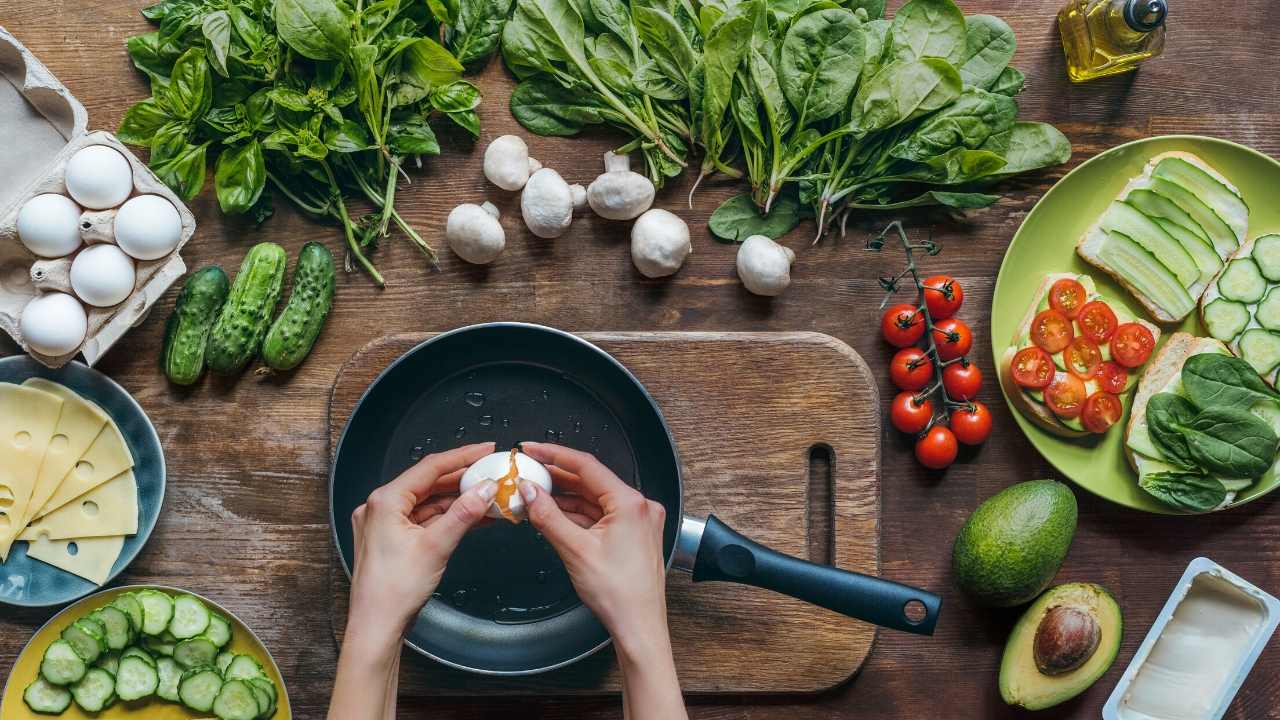 |
THE SPICE MARKET AFRICA.SPICES AT WHOLESALE PRICES #spices #letscook #kenyanmeals #basicposhhttps://youtu.be/3OaCvfRZvfI |
 |
One-Pot Spicy Spanish Seafood StewWelcome to Belovedsaffron.com, where we are passionate about spices, herbs, recipes and organic eating! Here you will find a wide range of spices,.. |
 |
Middle Eastern Spice Mixes For Chickpea DishesWhether you are looking to spice up your roasted veggies, hummus or falafel, Middle Eastern spice mixes can make any chickpea dish more flavorful... |
 |
Reacting To SPICY SANDWICH CHALLENGESAt Belovedsaffron.com, we're passionate about flavours, cultures and cooking wisdom from around the world. We seek to bring you closer to sustainable |
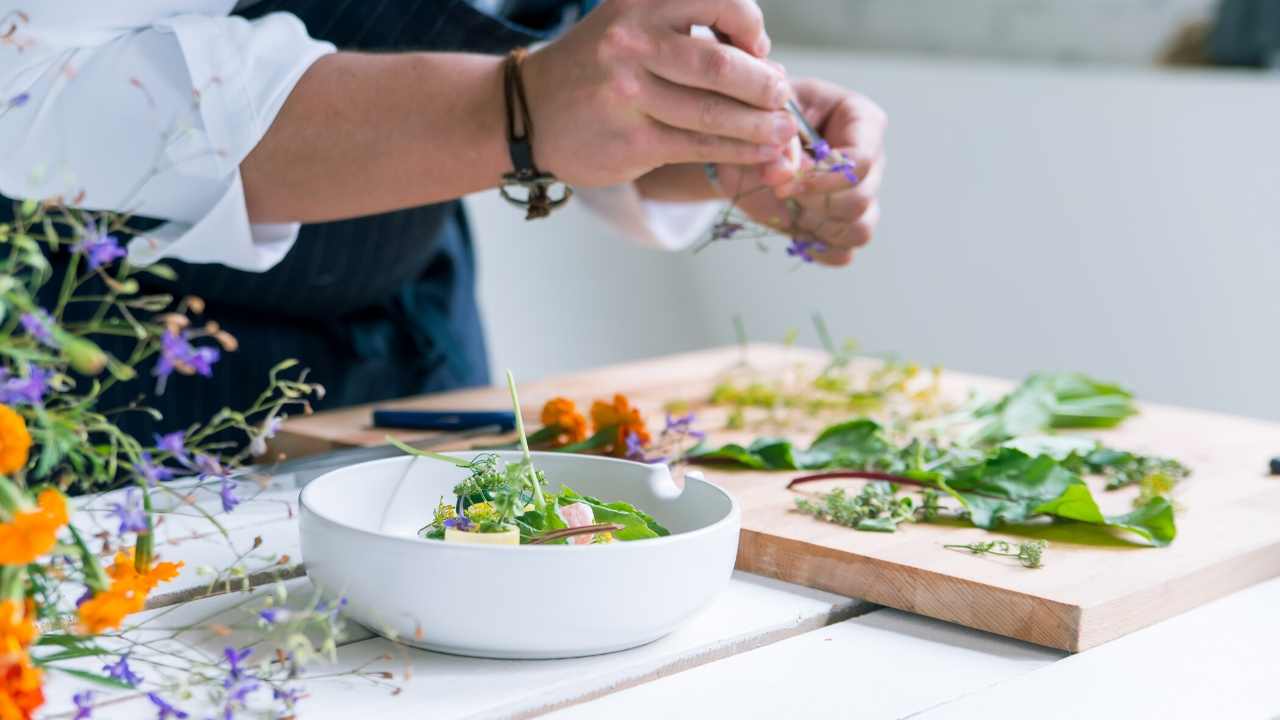 |
Best Traditional Eggplant Dish EVER in Rural Style | Iran Village LifeWe understand that food has the power to connect us all, transcending cultures and distances. At Belovedsaffron.com, we are passionate about spices,.. |
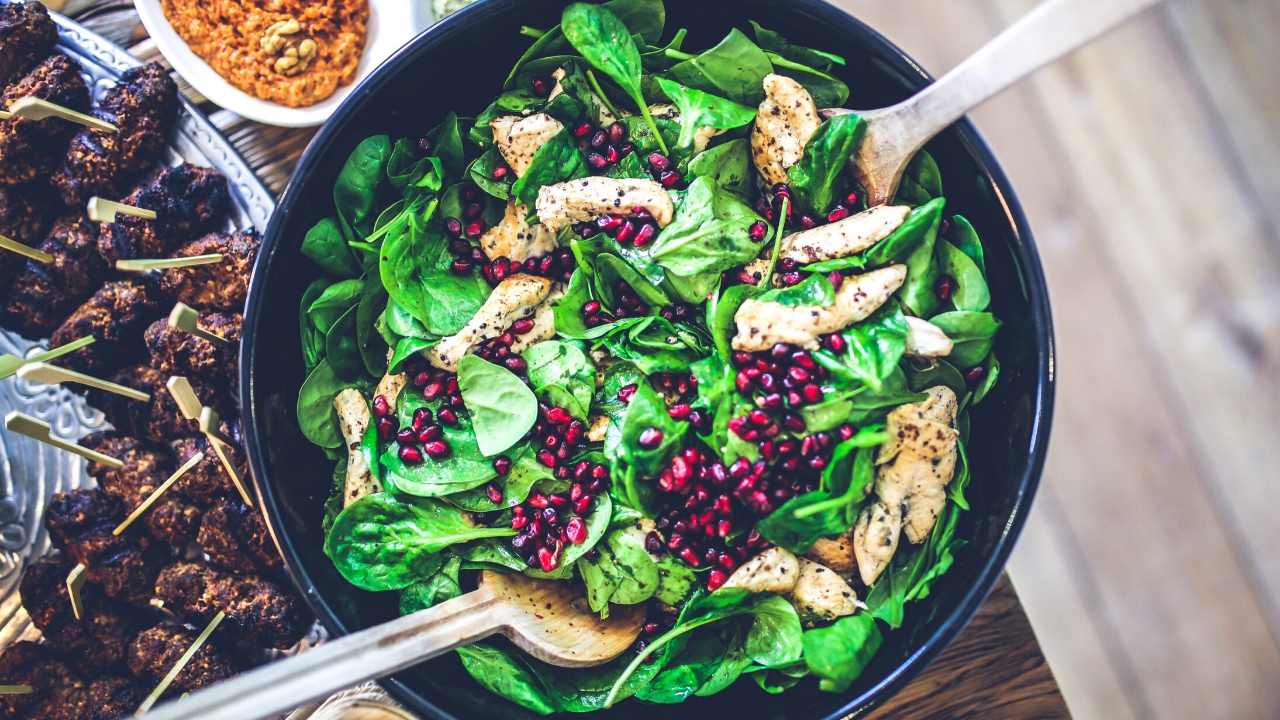 |
This One Secret Spice Lowers High Blood Pressure (It's Scientifically Proven!)Genuinely embracing global flavours, BelovedSaffron.com invites food lovers and passionate chefs to explore a world of spices and herbs, organic food, |
 |
Spice - Wikipediadefinition of spices |
 |
Latin American Spice Blends For PicadilloPicadillo is an easy, hearty stew that's popular across Latin America. Whether you serve it with rice, in tortillas, or as a filling for tamales or.. |
 |
5 Natural Blood Pressure Supplements that Lower Blood Pressure NaturallyDiscover the wonders of global cuisine at Belovedsaffron.com! Our mission is to bring you spices, herbs and organic food from all over the world,.. |
 |
How to Dehydrate Herbs and Make Your Own SpicesAt Belovedsaffron.com, we are dedicated to exploring the amazing world of spices and herbs, encouraging sustainable eating practices and sharing.. |
 |
ASMR CRAB CLAWS + SPICY NOODLES (EATING SOUNDS) NO TALKING | SAS-ASMRFried Chili chip link: https://shopsasnow.com/ Re-stock once a week, usually every Monday (Keep an eye out for the count down) ASMR CRAB CLAWS + SPICY |
 |
How to Make Homemade Seasoning BlendsLearn How to Make Homemade Seasoning Blends - A total of 10 Blends! I include How to Make a Ranch Dressing Mix, as well as How to Make an Onion Soup Mix. Plus, |
 |
WORLD''S BIGGEST HOT CHICKEN SANDWICH CHALLENGE (UNDEFEATED & UNCUT) | SPICY NASHVILLE HOT CHICKENTHATS HUGE! Created to be impossible! Today we face off against the worlds biggest Nashville hot chicken sandwich at Pete's Chicken Shack! This spicy chicken |
 |
How to Dehydrate Herbs and Make Your Own SpicesBuy 3 Birdies Raised Beds, Get 1 FREE: https://growepic.co/memorialdaysale23 If you have a bumper crop of herbs and want to experiment with your own spices, |
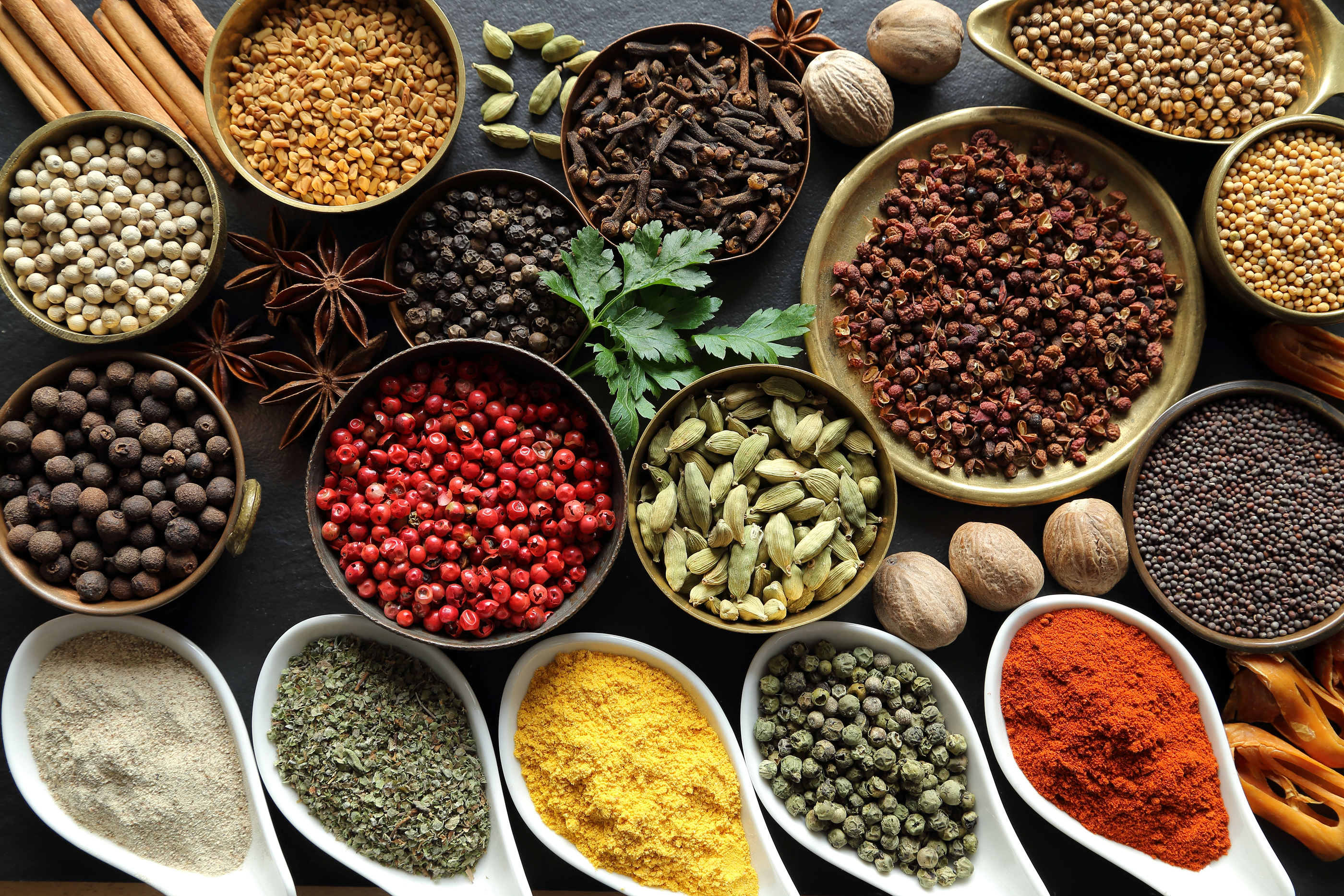 |
27 Essential spiecs you need to knowImportant spices in cooking |
 |
Introducing New Liquid SpicesDiscover the essence of flavor with our Sweet Sensations Collection. Elevate your menu and leave customers craving for more. Contact us today to tantalize |
 |
I grew the world''s most expensive spiceBuy 3 Birdies Raised Beds, Get 1 FREE: https://growepic.co/memorialdaysale23 Full video to come, this is a really fun and easy plant despite how expensive it |
 |
5 Natural Blood Pressure Supplements that Lower Blood Pressure NaturallyDOWNLOAD MY FREE EBOOK titled, "101 FOODS TO LOWER HIGH BLOOD PRESSURE." Just go to https://www.HealthyBloodPressure.com In this video you'll discover 5 |
 |
BLOOD PRESSURE: WebMD Recommends 6 Natural Supplements to Lower Your Blood PressureFREE EBOOK: "101 FOODS TO LOWER YOUR HIGH BLOOD PRESSURE." Just go to https://www.HealthyBloodPressure.com There are many supplements that claim to lower |
 |
North American Spice Combinations For Fish TacosFish tacos are a fun and flavorful way to eat fish. They’re easy to make and can be a great option for a quick weeknight dinner or a fun party dish!.. |
 |
10 PACKET SPICY KIMCHI FIRE NOODLES, SPICY KOREAN CHICKEN DRUMSTICKS, SUNNY SIDE UPS, CHICKEN MOMOSAt Belovedsaffron.com, we are dedicated to exploring the amazing world of spices and herbs, encouraging sustainable eating practices and sharing.. |
 |
Pickle Expert Guesses Cheap vs Expensive Pickles | Price Points | EpicuriousAt Belovedsaffron.com, we combine our passion for spices, herbs and organic eating with a mission to deliver knowledge and flavors from around the.. |
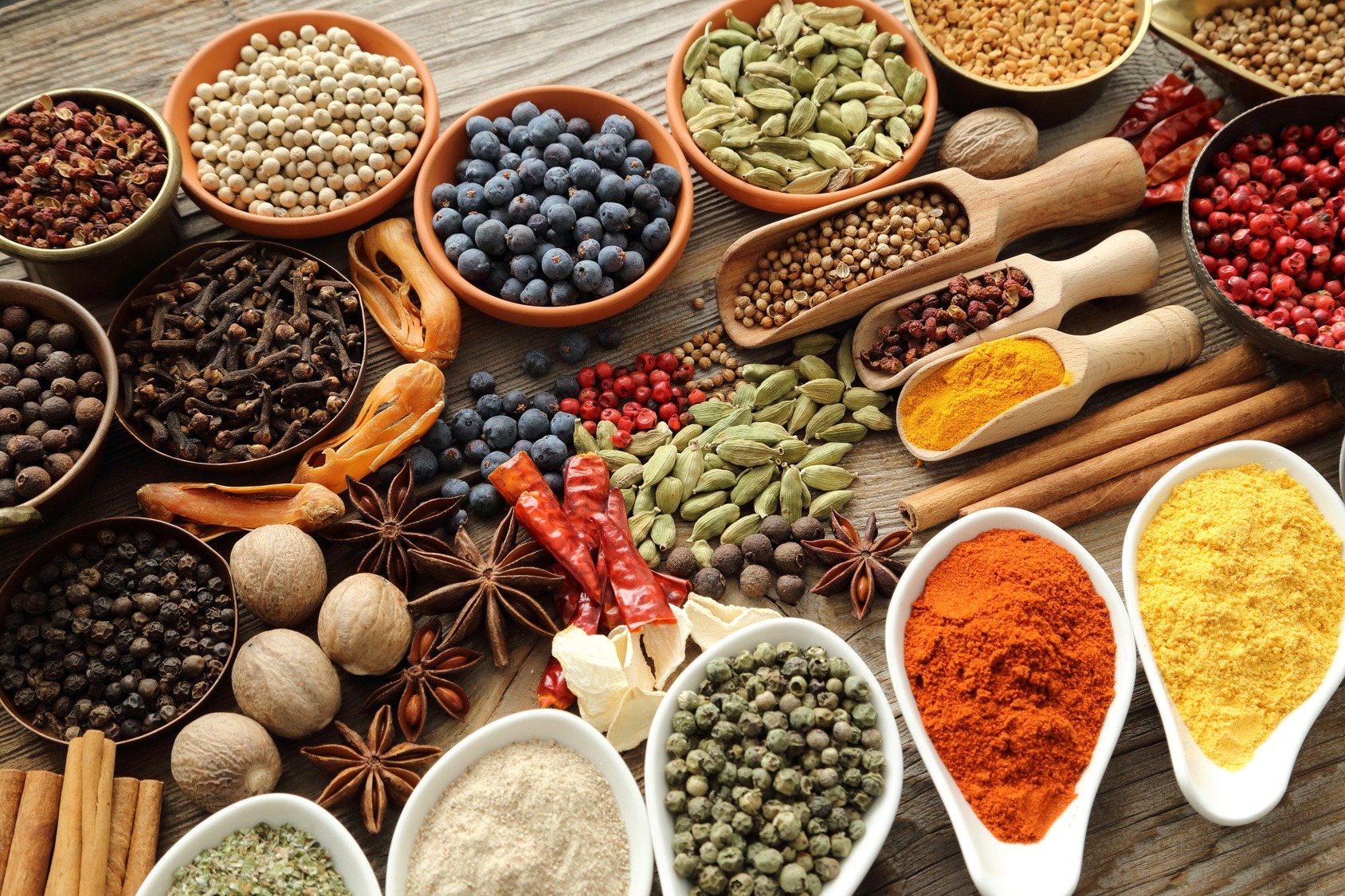 |
Your Herbs and Spices Guides & BlogsHerbs, spice & everything nice, these blog and articles explain the many uses of spices, including spices for weight loss, spices for brewing, and how to store |
 |
A better lamb biryani… in a RICE COOKER? | Marion’s KitchenAt Belovedsaffron.com, we believe that the key to good food and healthy eating is the proper use of spices, herbs, and other fresh ingredients. We.. |
 |
Spicy Seafood Boil with 21 Spices | Jamaican Street food TourAt Belovedsaffron.com, we are passionate about spices, herbs, recipes and organic eating. We are on a mission to bring you awareness about flavours.. |
 |
SPICY SPICY BIG MUTTON FAT CURRY, SPICY MURG CHOLE, CHEESY NAAN, FRIED PRAWNS & BASMATI RICE |EATINGAt Belovedsaffron.com, we combine our passion for spices, herbs and organic eating with a mission to deliver knowledge and flavors from around the.. |
 |
The Best Chocolate Frosted Carob Brownies- Vegan, Oil-free, Wheat-free, Refined-Sugar-freeAt Belovedsaffron.com, we are passionate about spices, herbs, recipes and organic eating and on a mission to bring you awareness about flavours from.. |
 |
Middle Eastern Spice Combinations For Yogurt SaucesMiddle Eastern yogurt sauces can be used for a variety of different purposes, including as a dipping sauce, salad dressing, or topping on grilled.. |
 |
HOT WINGS MAKEUP CHALLENGE!Welcome to BelovedSaffron.com, where we celebrate all the wonderful flavours of spices and herbs worldwide! We are not just chefs but food.. |
 |
Try this Restaurant Saffron and Shrimp Risotto! Your Taste Buds will Reward You!Welcome to Belovedsaffron.com, where we embrace everything related to spices, herbs, nutritious food, and organic eating! We are not professional.. |
/spices-5689d3013df78ccc1533efad.jpg) |
The Chopping Block Cooking Blog | spicesspices | Visit our blog for recipes, cooking tips and techniques as well as our staff's favorite eats and travel adventures. |
 |
Perfect Lamb Karahi At Home | Lamb Karahi RecipeWelcome to Belovedsaffron.com, where we are passionate about spices, herbs, recipes and organic eating! Here you will find a wide range of spices,.. |
 |
Spices Used in North African ShakshukaShakshuka is a popular North African and Middle Eastern dish that consists of poached eggs in a rich tomato sauce. It’s a delicious breakfast or.. |
 |
IPC PEPPER MARKET REPORT WEEK 20 – KEY HIGHLIGHTSThe pepper market this week showed a mix response as some foreign exchange slightly weakened against the US dollar.The Indian pepper price reported with a |
 |
CARDAMOMMay is the last production month of the 22-23 season. New crop will begin until October 2023. The season has been a large one for Guatemala and India. |
 |
IPC pepper MKT report - key highlights - NY PricesKey Highlights1 - The pepper market this week showed a rather positive outlook with no origin reported a decrease2- The Indian pepper price reported stable |
 |
Vietnam Pepper Exports 2023 - Price trendsVietnam Pepper ExportsAccording preliminary statistics of VPA,in April 2023, Vietnam exported 26,291 tons of pepper, 23,760 tons of black pepper and 2,531 tons |
 |
RGT Pepper mkt monthly update week 19Vietnam Pepper spike in price occurred over week 18 from initial 60s pricing ranged crossing into the highs of 70s; it went even firmer opening week 19 at 76 |
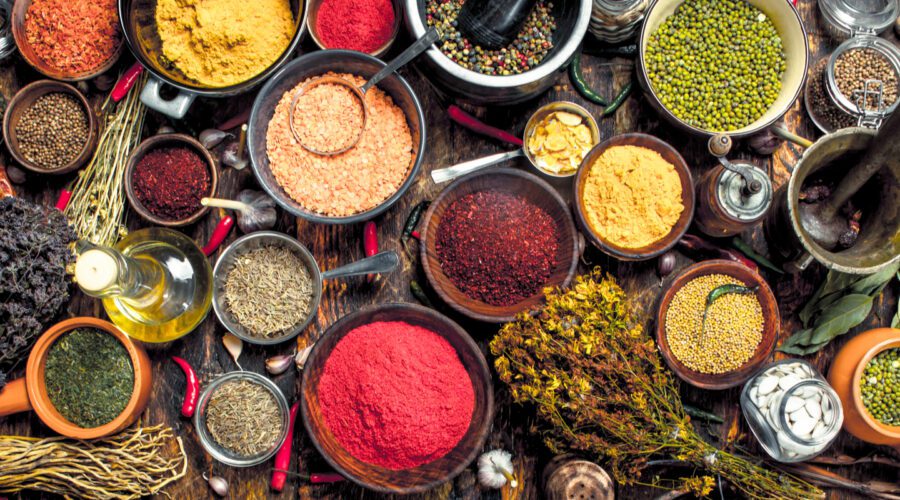 |
Spice Talk - Spice Station - New Ideas for Cooking with Spices!This spice blog writes about Indian fenugreek, Canadian coriander, Egyptian dill weed, Syrian Aleppo pepper, Granada nutmeg, & more from around the world. |
 |
Vietnam Pepper mkt update 8th May 2023 – Week 18Pepper prices continued to increase strongly last week with an increase of 8%. Thus, within 2 weeks, the price of pepper has increased by 12.5% from 68,500vnd |
 |
Vietnam Pepper mkt update 1st May 2023 – Week 17Last week, pepper price continued to increase impressively with an increase of 4.5%. Thus, pepper price in the past 2 weeks has increased by 7.5% from 66 |
 |
Why Kampot Peppercorns Are So Expensive=====================================================PINK PEPPER HARVEST START END OF MAYBEST QUALITY PRODUCT ARE ALWAYS AT THE BEGINNING.CALL US IN ORDER TO |
 |
Brazil pink pepper 202330 March 2023Brazil has had some extreme weather which will effect the 2023 crop for pink pepper. The off-season was marked by exceptional rainfall as never |
 |
Bullish Chinese Garlic25 April 2023In the last two weeks, the market for dehydrated garlic from China has seen a significant increase in demand. This surge in demand is primarily |
 |
Blog | Herbs Spices and Seasonings | High Quality | World of SpiceWorld of Spice is your online store for a massive range of High Quality Herbs Spices and Seasonings. Wholesale, Foodservice and Catering High Quality Herbs |
.png)





